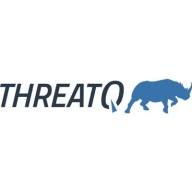

IBM Resilient and ThreatQ are competing products in the cybersecurity landscape. IBM Resilient tends to have the upper hand in integration capabilities and customer support satisfaction, while ThreatQ has an advantage due to its extensive feature set which is seen to justify the higher price point by some users.
Features: IBM Resilient offers strong incident response automation, seamless integration with third-party tools, and adaptability to diverse environments. ThreatQ provides a centralized threat intelligence platform, a larger repository of threat data for analysis, and specialization in threat intelligence management.
Ease of Deployment and Customer Service: IBM Resilient is recognized for its straightforward deployment process and comprehensive customer support during installation and operation. ThreatQ offers a sophisticated setup which can be complex, but provides detailed documentation and responsive service post-deployment.
Pricing and ROI: IBM Resilient is considered more cost-effective initially, with favorable ROI due to its integration capacity. ThreatQ has a higher setup cost; however, its extensive features often deliver significant ROI, justifying the investment for organizations prioritizing advanced threat management.

The Resilient Incident Response Platform (IRP) is the leading platform for orchestrating and automating incident response processes.
The Resilient IRP quickly and easily integrates with your organization’s existing security and IT investments. It makes security alerts instantly actionable, provides valuable intelligence and incident context, and enables adaptive response to complex cyber threats.
ThreatQ is a versatile threat intelligence platform designed for effective aggregation, analysis, and management of threat data. It streamlines threat information from multiple sources to enhance understanding and response capabilities.
ThreatQ supports incident response by correlating indicators of compromise and centralizing threat data in a single repository. This platform improves decision-making with its comprehensive threat landscape view and collaborative features. Its detailed analytics, customizable workflows, and scalability offer robust support for security teams. ThreatQ's integration with existing tools and powerful automation capabilities streamline threat detection and response processes. While some users point out the need for better integration and data visualization, ThreatQ remains a preferred choice for many due to its threat prioritization and reporting features.
What are the key features of ThreatQ?ThreatQ is implemented across various industries, providing valuable threat intelligence management in sectors like finance, healthcare, and government. These industries benefit from its incident response support, detailed analytics, and ability to centralize and prioritize significant threats, improving overall security posture.
We monitor all Security Orchestration Automation and Response (SOAR) reviews to prevent fraudulent reviews and keep review quality high. We do not post reviews by company employees or direct competitors. We validate each review for authenticity via cross-reference with LinkedIn, and personal follow-up with the reviewer when necessary.